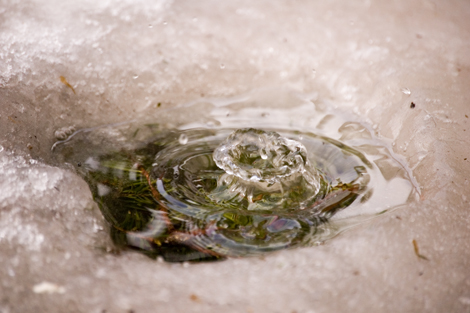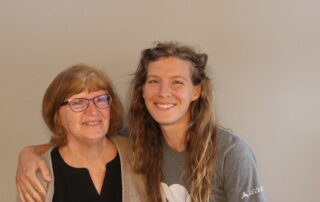Carol Dunbar and her family live off the grid in northern Wisconsin. It has its challenges, but those challenges have provided important lessons, too, about the preciousness of certain resources.
We stand guard at our stations: me at the kitchen sink, my son by the front door, and my husband outside by the electrical box with the dog. The front door is closed because it’s 24 below. Snowbanks are piled like camel humps under the roof eaves.
“Ready?” Husband shouts from outside.
“Ready?” Son calls to me.
“Ready!” I say from the kitchen.
“Ready!” My son relays.
“Pumping!” shouts my husband.
“Pumping!” echoes son.
“No water!” I call back.
“No water!” says my son.
“Turn it off!” I say. “Turn the pump off!”
The lights flicker, a buzzing courses through the walls, the phones go dark, and we lose all power. My son and I are screaming, “Turn off the pump!” The dog is barking.
“Pump off!” says Husband.
We all bow our heads and wait thirty seconds.
Then we do it all again.
It’s been over two weeks since the pump worked for more than a few minutes. Every day our holding tanks run out of water — nothing comes from the taps. I’ve been melting snow and filling jugs, placing bowls under faucets to catch every drop.
We’ve been without running water before. For the past 14 years our family has lived off the grid in [can you locate us?]. We generate our electricity, pump water from a well. If we lose our lights, it’s because our engine is down, our batteries low, or a mouse has chewed through the wires.
The water pump sits seventy-five feet underground. It sends water all the way up to the holding tanks on the third floor of a vertical building we call the water tower. Built out of pine clapboards it sits on a hill. The height gives us water pressure, but if temperatures plummet or the wind chill rips, the pipes freeze. As we update and improve a system that was already set up when we got here, we do things wrong. We’ve gone long periods without running water, the worst being three months during winter when our kids were under five.
Now, they help. We have it down like a drill: pack snow, melt snow, pour it in the buckets.
One soup kettle of snow yields one cup of water. The average toilet requires 56 cups to flush – or four hours of melting. Our son who is ten splits the logs for the woodstove; our daughter who is 12 builds fires, rotates pots.
Late January the well-digger comes with our replacement pump. The apparatus responsible for our water is surprisingly elegant, a silver tube about nine-feet long and no wider in diameter than my daughter’s arm. After he leaves, I stare at the tap. Does water really come out of there? It seems wrong, that something so precious would come so easy.
I turn the handle. Water flows.
Three days later I watch on the news as villagers in faraway places walk miles to fill their jugs. The Save the Water Organization says that over 1.2 billion people have to scramble daily to get their water. Contaminated water flowing into the homes of residents in Flint, Michigan, made children sick, caused rashes, hair loss, lowered IQs.
In the aftermath of no water, an unspoken reverence fills our house. At the sink my husband uses a bowl to catch the runoff when he rinses his hands. My children never throw away the water left in a cup. Instead, they pour it in a bowl for the dog and pat his head.
They know – every drop counts.










